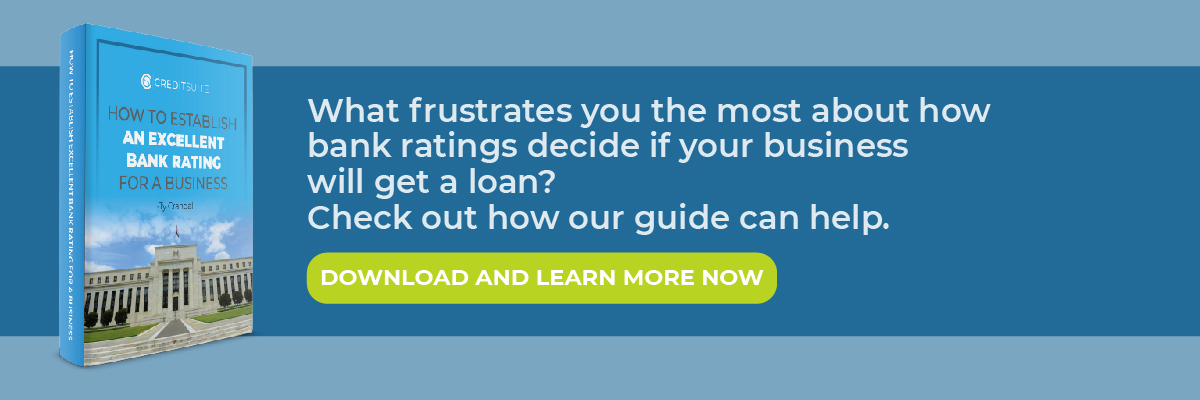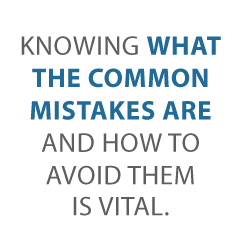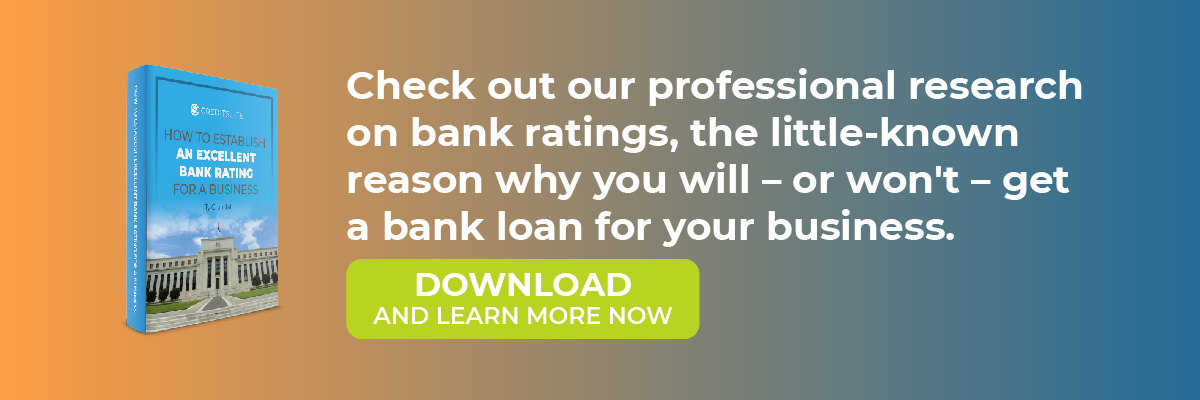… and What to Do Instead
When it comes to applying for a small business loan, there is a right way and a wrong way to do things. The problem is, no one really tells you the wrong ways. There is not a class that tells you what not to do. There are directions given, sure. However, there is much room left for mistakes when someone is only telling you what you should do.
The truth is, it can be just as useful to know what not to do. Knowing what the common mistakes are and how to avoid them is vital. Here are 5 common mistakes that can mean disaster for your application approval odds.
1. Not Having a Complete and Professional Business Plan Before Applying for a Small Business Loan
Any traditional lender is going to need to see a business plan as part of the loan application process. The problem is, many business owners have no clue what this should look like. There is so much more to it than just filling out a few lines to answer questions on the application. It is much more than writing answers in a template.
A complete business plan is really a combination of a number of reports that need to be researched and written. It is rare that a business owner has all of the knowledge and skill needed to sufficiently put together an entire business plan on their own.
A complete business plan should include the following:
Introduction
- An Executive Summary
This is a complete summary of the business idea.
- Description
The description goes into further detail than the summary, describing the business. What type of business is it? What product or service will it offer? This is where you work to get others excited about your business. Note that this is important even if your business is already operating. It will just be in the present rather than the future tense.
- Strategies
Layout your plan for getting started. Do you have a marketing plan, area in mind for location, or idea of how many employees you will start with? What is your ramp up plan? Again, already operating businesses will state the current operating strategy.
Market Research
- Market Analysis
This actually includes two parts:
o Analysis of audience:
What need will your business fill, and for who? Explain the need you see in your market and how your business will fill that need.
o Competitive Analysis
Is there already a business working to fill this need? Is there room for more? How do you plan to compete with them?
If you are not a new business, this will be a market analysis that supports your need for funding, or that shows your business is strong and growing.
Plan and Financial Information
- Plan for Design and Development
How is all of this going to play out, from start to finish. What steps are you going to take? This part should be more detailed than your strategies section.
- Plan for Operation and Management
Who will own or does own the business and who will run or currently runs it from day to day. This could be as simple as stating that you are the sole owner and operator. It could be as complicated as laying out a complete partnership plan or board or directors’ chart. It just depends on how your business works.
- Financial Information
This section includes current financials, projections, and a budget plan for the loan funds you are applying for. Lenders need to see that you know how to handle any funds they may give you, including paying them back.
2. Trying to Put Together Your Own Financials When Applying for a Small Business loan
While it may be possible for a business owner to handle writing a budget for loan funds, it is unlikely that a business owner can provide sufficient financial statements and tax returns on their own. It is much better to have an accountant prepare all financial statements to be included with the business plan, and any others that lenders may ask for, to ensure completion and accuracy.
The same is true for tax returns. A professional tax preparer will be better able to ensure accuracy and answer any questions the lender may have.
3. Not Being Willing to Pledge Collateral When Applying for a Small Business Loan
While it is often not a requirement, it is always helpful to pledge collateral. Loan terms will be better, interest will be lower, and you will likely end up being eligible for more money. In addition, not being willing or able to pledge collateral sends up a red flag from the beginning. If you aren’t willing to take a risk for your business, why should a lender be willing?
4. Not Knowing or Understanding Your Credit Scores Before Applying for a Small Business Loan
Before you begin applying for a small business loan, you need to know your credit scores. Where do they come from? What do they mean? If you do not know what your credit score is telling your lender about you, you are going in blind.
Most understand their personal credit scores and where they come from. Fewer understand their business credit score, where it comes from, and what it tells lenders.
It is way more involved that personal credit, and much less cut and dry. There are many more options for reports and scores, and each business credit reporting agency calculates the scores a little differently. Furthermore, some business credit reporting agencies allow the lenders to weight certain information.
This means two lenders could end up with a totally different credit report with a different score on the same borrower based on how they asked for the information to be weighted. It definitely much harder to get a grip on your business credit score. Let’s break it down to gain a better understanding.
Business Credit Report from Dun & Bradstreet
Dun & Bradstreet offers a number of business credit report options. In fact, there are 6 various reporting alternatives in all. They all supply various info relating to business credit history and credit worthiness. The result is, it takes all of them for a lender to get the complete picture.
However, some lenders only use Dun & Bradstreet to get the PAYDEX. This is probably because it is the easiest to comprehend. It is the most like the consumer FICO rating, determining how promptly a consumer makes payments on a scale from 1 to 100. Ratings of 70 or higher are good. For more information on Dun & Bradstreet and their other business credit scores and reporting options go here.
Experian Business Credit Scores
Experian uses what it calls Intelliscore. There are greater than 800 different variables that they make use of to forecast a company’s credit risk. With Intelliscore, a score of 76 or greater indicates a reduced risk of default or late payment. If a score drops between 51 to 75, it indicates a reduced to medium threat.
Scores from 26 to 50 are medium threat. Lastly, from 25 down to 1 is average high to high risk. Find out more about Experian credit scores here.
Equifax Business Credit Score When Applying for a Small Business Loan
Equifax gets its business credit report information in methods comparable to D&B as well as Experian. Like D&B, they have a sharing contract with the Small Business Finance Exchange.
They combine monetary information with industry information, and they include utility and telephone payment data as well. Public records are also a source of information. Find out more about Equifax business credit scores here.
How Can You Know Your Score Before Applying for a Business Loan?
Just understanding your business credit score is not enough. You need to know what you can do about it if it isn’t helping you get funding. That’s where monitoring comes in. Unfortunately, you cannot get a free copy of your business credit reports like you can with your personal credit reports. It costs money to see your business credit score.
For example, the big three charge close to $50 or more for each report:
- Dun & Bradstreet reports range in price from $61 to $229 per report.
- Experian reports are $49.95 per report.
- Equifax is $99.95 per report.
You can monitor your credit with D&B and Experian at a fraction of these costs by going to https://www.creditsuite.com/monitoring/.
Don’t forget personal scores matter as well, for a couple of reasons. First, most if not all traditional lenders will check your personal credit score before they even consider business credit. If your personal credit isn’t the best, then good business credit can help you get the loan anyway.
If your personal credit is okay but not top notch, good business credit can help you when it comes to rates and terms. However, another reason personal credit is still important is this. Some of the business credit reporting agencies use your personal credit score in their business credit score calculation.
5. Not Considering Other Types of Financing Before Applying for a Small Business Loan
Sometimes, applying for a small business loan isn’t the best option. There are other options, and in some situations, they may be best. Some other options include:
SBA loans
While these are loans still disbursed by traditional lenders, they are guaranteed by the federal government. This means two things. First, some business owners may be eligible for SBA loans even if they are not eligible for other loans from a specific lender. Next, it means that these loans have a much more involved and lengthy application process.
However, if your credit score is on the cusp of what is needed and you meet the other eligibility requirements, then an SBA loan may very well be what works best for you. Don’t forget to research this option when applying for a small business loan.
Alternative lenders
These are lenders other than banks and credit unions. They typically operate online. Due to this, they usually have a faster application process. These lenders also tend to have less stringent eligibility requirements. What’s the catch? They generally have higher interest rates.
However, if you are aware of where your credit scores are, you can know on the front end to just skip applying for a small business loan with a traditional lender and head straight to these types of lenders. It could save you a lot of time and hassle.
Invoice Factoring
If you need money fast, invoice factoring might be a better option than a traditional loan. Lenders that factor invoices will pay you a portion of what they are worth immediately. Then, when the funds come in, they will send you the difference less their factoring fee. You don’t end up with all the funds from the invoices, but you definitely get fast cash.
Merchant Cash Advance
This is an advance against future credit card sales. The lender averages your daily credit card sales and lends funds against what is expected in the future, at a premium. This is another way to get cash fast, and while the premium may be higher than the interest rates on some loans, it is a much more convenient option in some cases.
How Do You Avoid These Blunders When Applying for a Small Business Loan?
So the best first step is to check your credit. That can help you avoid a lot of mistakes by simply guiding you toward the right type of lender. Once you decide between a traditional lender, an alternative lender, or some other type of financing, you can determine what the requirements are.
If you need a business plan or financials, you can find a professional to help with these items before you even start the process.
Don’t forget to consider collateral. Take everything into consideration. Your business is the first and most obvious option. You could also use any land that you or the business owns. Even company automobiles can be used as collateral. Explore all your options. It can make a huge difference in terms of interest rate and the amount of money you are eligible for.




